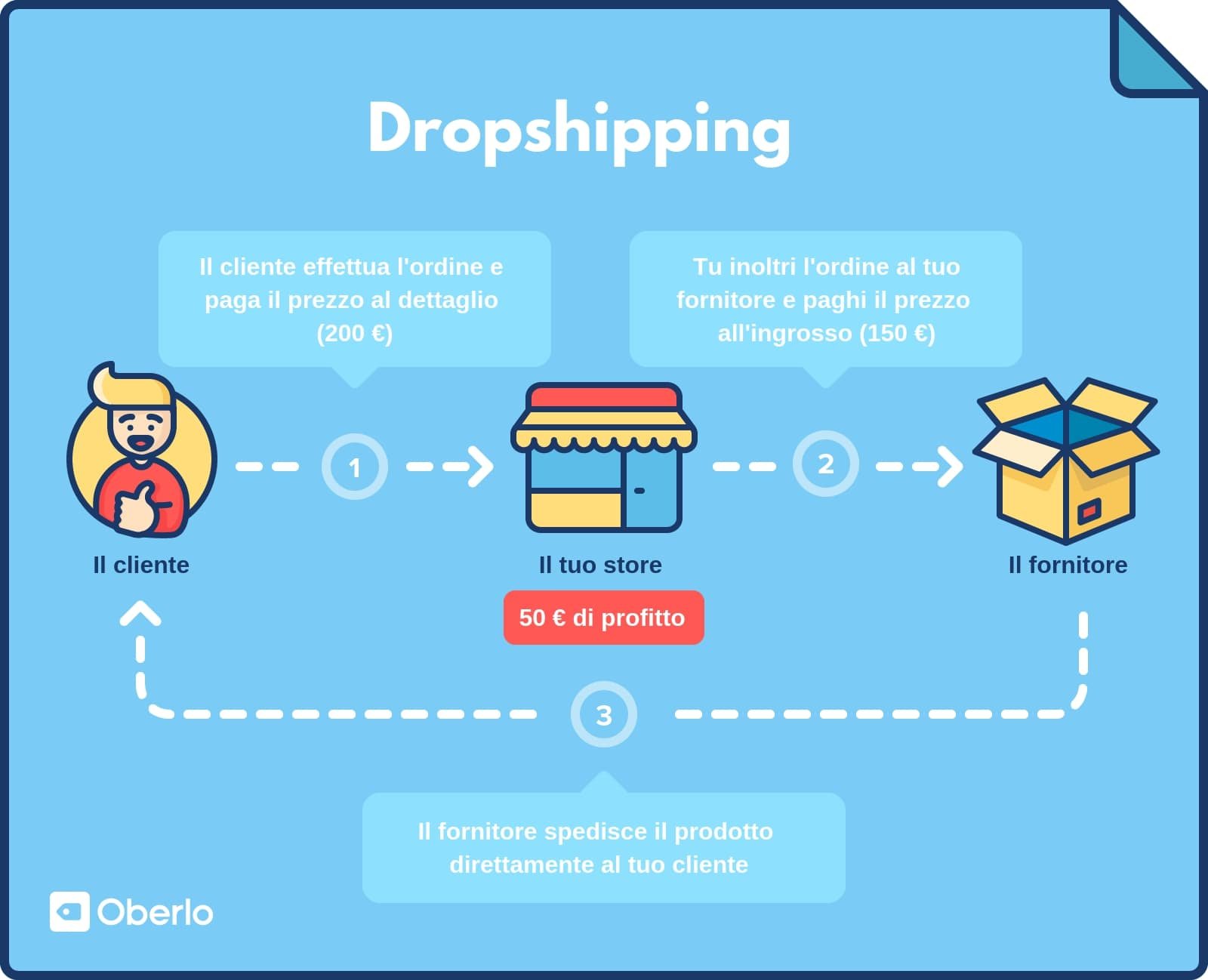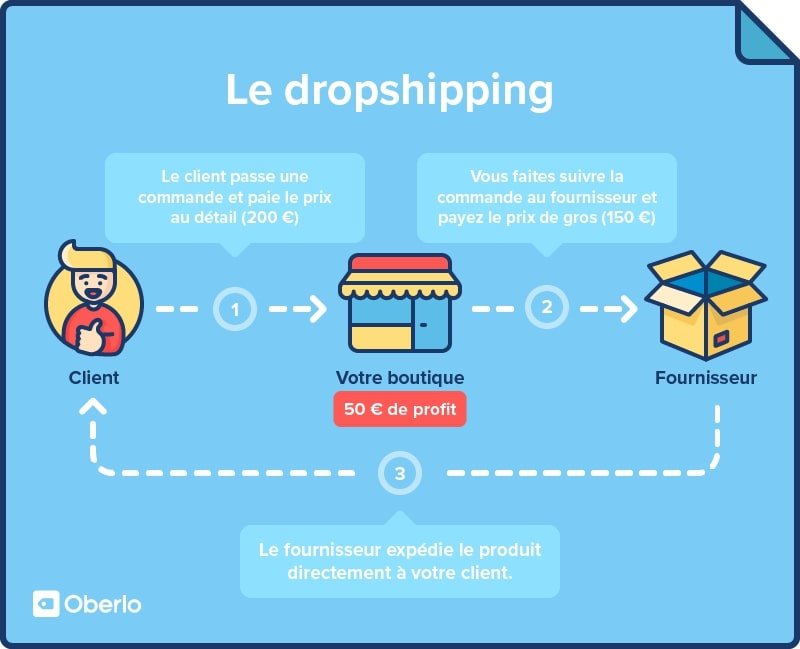In a world where e-commerce has become a dominant force, dropshipping emerges as an alluring business model that captivates both aspiring entrepreneurs and seasoned business moguls alike. But behind its seemingly simple façade lies an intricate web of trade secrets that only a select few have managed to unravel. Today, we embark on a journey to demystify this enigmatic world and uncover the hidden gems that lie within the labyrinthine structure of dropshipping. Welcome to a realm where creativity meets neutrality, as we delve deep into the secrets of unlocking the potential of dropshipping.
Table of Contents
- Understanding the Dropshipping Model: A Deep Dive into its Mechanics and Workflow
- Navigating the Challenges: Strategies to Overcome Common Dropshipping Obstacles
- Identifying Profitable Niches: Key Factors and Research Techniques for Success in Dropshipping
- Optimizing Dropshipping Operations: Proven Tactics to Streamline Inventory Management and Order Fulfillment
- Q&A
- In Retrospect

Understanding the Dropshipping Model: A Deep Dive into its Mechanics and Workflow
Dropshipping has rapidly gained momentum in the world of e-commerce, revolutionizing the way businesses operate and allowing aspiring entrepreneurs to delve into the world of online retail without the burden of inventory or shipping logistics. In this post, we embark on a deep dive into the mechanics and workflow of the dropshipping model, unraveling its mystique and shedding light on its intricate web.
At its core, dropshipping is a fulfillment method where online retailers don’t need to keep the products they sell in stock. Instead, they partner with suppliers who directly ship the products to the customers. This process eliminates the need for warehousing, inventory management, and shipping hassles. Here’s a breakdown of the step-by-step workflow involved in dropshipping:
1. Setting up an online store: As a dropshipper, you’ll need to create an online store to showcase and sell the products. Platforms like Shopify, WooCommerce, and Magento provide easy-to-use interfaces for building your virtual storefront.
2. Sourcing products: Research and identify products that have high demand and low competition. Look for reliable suppliers who offer dropshipping services. Popular platforms such as AliExpress, Oberlo, and SaleHoo connect you with a vast network of suppliers, making it easier to find and import products to your store.
3. Displaying products: Once you have chosen your products, add them to your online store along with captivating descriptions, high-quality images, and compelling pricing. Make sure to organize your products into relevant categories for easy navigation.
4. Marketing and driving traffic: To attract customers, employ various marketing strategies such as social media advertising, search engine optimization, content marketing, and influencer collaborations. Your aim is to drive traffic to your online store and convert those visitors into paying customers.
5. Processing orders: When a customer makes a purchase on your store, the order information is automatically forwarded to your supplier. They will handle the packaging and shipping process, ensuring that the product reaches the customer’s doorstep while preserving the confidentiality of the dropshipping arrangement.
Understanding the intricate mechanics and workflow of dropshipping is crucial for success in this industry. By harnessing the power of this fulfillment model, entrepreneurs have unlocked a world of possibilities, where they can focus on marketing and customer satisfaction, leaving the logistics to their trusted suppliers. Embrace dropshipping’s web of opportunities and create a thriving online business without the traditional limitations of inventory management.
Navigating the Challenges: Strategies to Overcome Common Dropshipping Obstacles
Dropshipping may seem like a dream come true for aspiring entrepreneurs looking to break into the world of e-commerce. It offers the opportunity to start a business with minimal upfront costs, no need for physical inventory, and the ability to run it from anywhere in the world. However, like any business model, dropshipping comes with its own set of challenges that can leave beginners feeling overwhelmed. In this post, we will explore some strategies to help you overcome common obstacles in dropshipping.
One of the biggest challenges dropshippers face is sourcing reliable suppliers. It can be a daunting task to find suppliers who offer quality products, competitive prices, and reliable shipping. To navigate this challenge, consider the following strategies:
– Research multiple suppliers and compare their product offerings and pricing.
– Look for suppliers who have positive reviews and ratings from other dropshippers.
– Connect with other dropshippers in online communities or forums to get recommendations for trusted suppliers.
– Reach out to potential suppliers and ask for samples of their products to ensure their quality meets your standards.
Another common obstacle in dropshipping is shipping delays and complications. Your customers expect timely delivery of their orders, and any hiccups in the shipping process can lead to dissatisfaction and potential loss of business. To overcome this challenge, try implementing the following strategies:
– Choose suppliers who offer fast and reliable shipping options.
– Clearly communicate shipping times and tracking information to your customers, setting realistic expectations.
– Keep an open line of communication with your suppliers to ensure they are on top of any shipping issues or delays.
– Consider offering expedited shipping options for customers who are willing to pay extra for quicker delivery.
By employing these strategies, you can navigate the challenges of dropshipping and build a successful online business. Remember, perseverance and adaptability are key in overcoming any obstacles you may encounter along the way. Stay on top of industry trends, continuously improve your processes, and always provide excellent customer service. With determination and the right strategies, you can unlock the trade secrets and demystify dropshipping’s intricate web.
Identifying Profitable Niches: Key Factors and Research Techniques for Success in Dropshipping
In order to build a successful dropshipping business, it is crucial to identify profitable niches that have a high potential for success. This can be a challenging task, but with the right strategies, you can unlock the trade secrets and demystify the intricate web of dropshipping. Here are key factors and research techniques that will help you navigate the world of dropshipping and find your profitable niche.
1. Passion and expertise: Start by brainstorming niches that align with your passions and areas of expertise. Your enthusiasm and knowledge in a specific niche will help you build credibility and stand out from the competition.
2. Market demand and competition: Conduct thorough market research to identify niches that have a high demand and relatively low competition. Utilize tools like Google Trends, keyword research, and competitor analysis to gain a better understanding of the market landscape.
3. Profit margins: Consider the potential profit margins of your chosen niche. Look for products that have a higher selling price and can be sourced at a lower cost to maximize your profits.
4. Target audience: Define your target audience within the chosen niche. Understand their demographics, preferences, and pain points to effectively tailor your marketing strategies and product selection.
5. Seasonal trends: Pay attention to seasonal trends and fluctuations in demand. Some niches may experience higher demand during specific times of the year, which can impact your sales and profitability.
6. Supplier reliability: Research and select reliable suppliers who can consistently provide high-quality products and timely shipping. Customer satisfaction is essential for long-term success in dropshipping.
By considering these factors and using research techniques, you can confidently identify profitable niches in dropshipping. Remember, success in dropshipping comes from finding the right niche, understanding your target audience, and continuously adapting to the market’s demands.

Optimizing Dropshipping Operations: Proven Tactics to Streamline Inventory Management and Order Fulfillment
When it comes to dropshipping, efficient inventory management and order fulfillment are key to ensuring a smooth operation. In this post, we will unveil some proven tactics that can help you streamline these aspects of your business, enabling you to save time and money, and ultimately optimize your dropshipping operations.
1. Embrace automation: Use inventory management tools and software that can automate repetitive tasks such as inventory tracking, stock alerts, and order fulfillment. This will not only save you time, but also reduce the risk of human error.
2. Implement a real-time inventory system: Ensure you have an accurate view of your stock levels at all times. This will help you avoid overselling products that are out of stock, and prevent delays in order fulfillment.
3. Establish strong partnerships with suppliers: Work closely with reliable suppliers who can provide fast and efficient shipping services. This will help you fulfill orders quickly and keep your customers happy.
4. Optimize packaging and shipping: Explore different packaging options to find the most cost-effective and efficient method for your products. Consider factors such as size, weight, and fragility to minimize shipping costs and reduce the risk of damage during transit.
By implementing these tactics, you can unlock the trade secrets of dropshipping and navigate its intricate web with confidence. Remember, streamlining inventory management and order fulfillment is crucial for success in this competitive industry. So, take advantage of automation, real-time inventory systems, strong supplier partnerships, and optimized packaging and shipping to ensure your dropshipping operations run like a well-oiled machine.
Q&A
Q: What is dropshipping and how does it work?
A: Dropshipping is a retail fulfillment method where a store doesn’t keep the products it sells in stock. Instead, when a store sells a product using the dropshipping model, it purchases the item from a third party and has it shipped directly to the customer. This way, the retailer never sees or handles the product, thus eliminating the need for inventory management.
Q: Is dropshipping a legitimate business model?
A: Absolutely! Dropshipping has gained significant popularity in recent years due to its low barrier to entry and flexibility. When executed properly, it can be a profitable venture for aspiring entrepreneurs.
Q: How do dropshippers find suppliers?
A: Dropshippers find suppliers through various channels, including online directories, industry trade shows, and networking. Online marketplaces like AliExpress, SaleHoo, and Oberlo are commonly used platforms to source products from manufacturers and wholesalers.
Q: What are the advantages of dropshipping over traditional retail models?
A: Dropshipping offers several advantages including low startup costs, as there’s no need to invest in inventory upfront. It also provides flexibility, allowing entrepreneurs to run their businesses from anywhere with an internet connection. Additionally, dropshipping allows retailers to offer a wide range of products without the hassle of managing physical inventory.
Q: Are there any disadvantages to dropshipping?
A: While dropshipping has numerous benefits, it’s important to consider potential downsides as well. Since you’re relying on suppliers to fulfill orders, any shipment delays or quality issues can impact customer satisfaction. Customer support and managing returns can also be more challenging when you don’t have direct control over the fulfillment process.
Q: How can dropshippers build a successful online store?
A: Building a successful online store involves various factors. Firstly, it’s crucial to select a niche market or target audience to focus on. This helps in establishing a brand identity and attracting the right customers. Additionally, thorough market research, effective marketing strategies, and providing exceptional customer service are key elements in creating a successful dropshipping business.
Q: Are there any legal implications or regulations in dropshipping?
A: Dropshipping itself is a legal business model. However, it is important to consider legal requirements such as obtaining the necessary business licenses, complying with consumer protection laws, and accurately representing products to customers. Each country or region may have specific regulations that dropshippers need to be aware of.
Q: Can dropshippers make substantial profits?
A: Dropshipping has the potential for substantial profits, but success doesn’t come overnight. It requires dedication, diligent research, effective marketing strategies, and adapting to market trends. Building a reputable brand and providing excellent customer service are essential to long-term success and profitability.
Q: How can dropshippers ensure a seamless order fulfillment process?
A: To ensure a seamless order fulfillment process, dropshippers should establish strong relationships with reliable suppliers who can consistently meet customer expectations. Regular communication, setting clear expectations, and monitoring supplier performance are crucial. Additionally, utilizing order tracking systems and providing timely and transparent communication with customers can help avoid unnecessary complications.
Q: Is dropshipping suitable for everyone?
A: Dropshipping can be a suitable business model for many, but it’s not without its challenges. The key is being willing to invest time and effort into understanding the intricacies of this retail method. While dropshipping offers flexibility and opportunities for success, it requires dedication, continuous learning, and adaptability to navigate the ever-changing e-commerce landscape.
In Retrospect
As we unravel the enigmatic and intricate web of dropshipping, we find ourselves in awe of its immense potential and elaborate workings. From humble beginnings to a thriving industry, this secretive trade has emerged as a preferred pathway for aspiring entrepreneurs. While it may seem like a tangled labyrinth, fear not, for we have demystified the trade secrets and illuminated the path toward dropshipping success.
With a pinch of creativity and a sprinkle of resourcefulness, dropshipping offers a limitless canvas for innovation. It liberates aspiring business minds from the constraints of inventory management and shipping logistics, providing a seamless avenue to tap into the global market. The intricate interplay between suppliers, retailers, and customers unfolds as a symphony of efficiency and profitability.
But let us not forget the cautionary tale that lies hidden beneath dropshipping’s alluring allure. As the trade secrets unlock, so do the risks and challenges that lurk within this intricate web. Fierce competition, supplier reliability, and customer satisfaction dance together on a delicate tightrope, necessitating a meticulous balancing act. Yet, with research and adaptability, these hurdles can be triumphed by those willing to embark on the dropshipping journey.
Aspiring dropshippers, be prepared to navigate the ever-changing landscape of trends and fads. Dive deep into the market, analyze consumer behavior, and identify the golden nuggets that can set your store apart from the sea of competitors. Remember, creativity becomes the compass that guides your success, as you curate a unique and captivating store that captivates the hearts and wallets of your customers.
In this finale of our exploration, we demystify the intricate web of dropshipping, exposing both its allure and its intricacies. We have witnessed the blossoming of dreams, the overcoming of challenges, and the triumphs of success. It is with a neutral tone that we reignite your passion and curiosity for this trade, presenting it not as a mythical legend, but as a viable option for your entrepreneurial aspirations.
Unlocking the trade secrets of dropshipping empowers us all to embark on this mesmerizing journey, weaving our own success story within its intricate web. Step courageously, dear reader, and may the path ahead lead you to boundless possibilities and shimmering achievements. Now, let the adventure begin.

